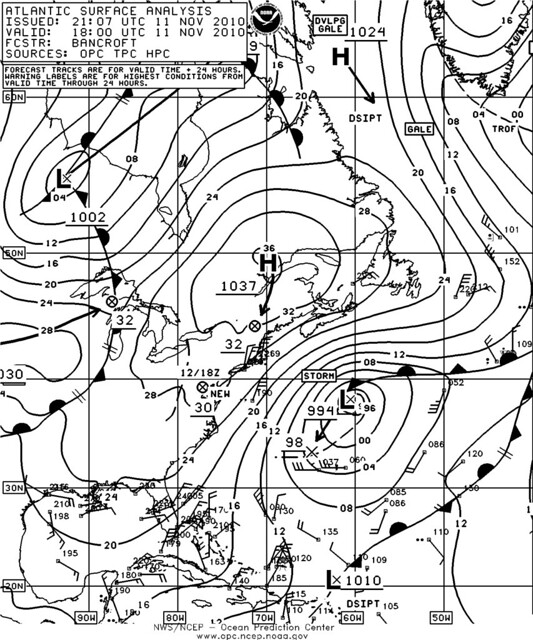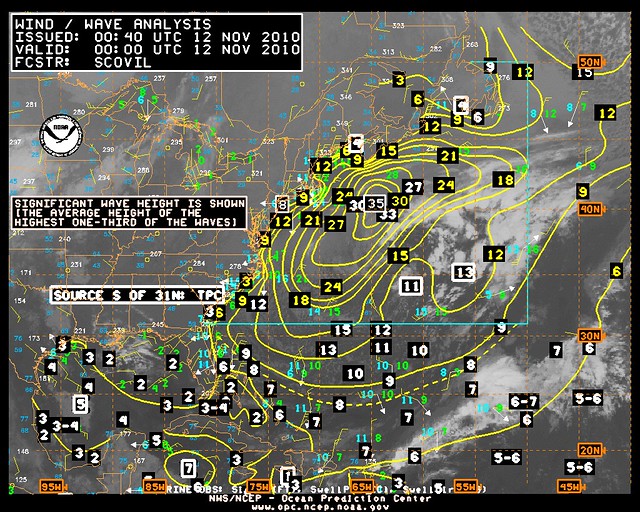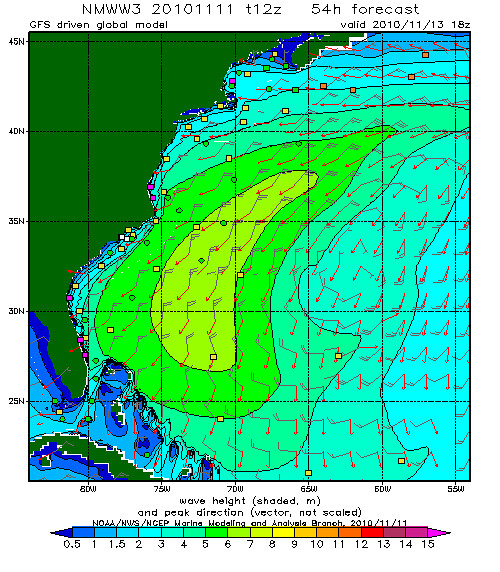Surf's Up
A large ocean storm with winds over 60 mph is sitting nearly stationary in the northwest Atlantic.

Thursday afternoon ocean surface analysis.
This ocean storm, which its large and strong wind field on the west side is generating huge waves up to 35 feet traveling in a southward direction. These waves are propagating south toward the US East Coast including Florida's east coast.

Thursday evening ocean wave analysis. Note the large area of greater than 27 foot seas with a maximum of 35 feet.
These waves, carrying a large amount of energy that they absorbed from the strong winds will begin reaching South Florida's beaches on Friday, lasting through Sunday. The wave model forecast below for Friday morning shows the bigger swells reaching the north Florida coast.

Wave Watch 3 computer model wave forecast for Friday morning. Wave heights are in meters.
Over time the wave heights decrease as the waves spread out and away from the strong winds. By Saturday the largest waves should be passing along the South Florida coastline.
Wave Watch 3 computer model wave forecast for Saturday midday. Wave heights are in meters.
To get really big "Hawaii 5-O" type waves you need a lot of other things going on. One of the main things needed is the winds blowing offshore into the waves as they are coming onshore. If the winds are too strong, the tops blow off the waves. If they are too light, the waves don't really "stand up" but break as a large area of water running up the beach.
The concern through the weekend is two fold. First, with very large volumes of water coming up the sand of the beach, and all that water rushing back out before the next wave about 15 seconds later, the risk of rip currents will be quite high. The second risk is for coastal flooding. At times of high tide these large waves of water will have a tendency to push up and over the beach. One other interesting thing is the "wave period" or time between the peak, valley, and next peak of each wave will be long (large). Typically we see wave periods of 3 to 5 seconds. These are local wind driven waves and with their short period, we consider them "steep". The waves coming from the ocean storm have a period of nearly 15 seconds and with a period that large, we call them "swells".
If you are at the beach this weekend or boating, use extra caution, these waves carry a tremendous amount of water and power.



